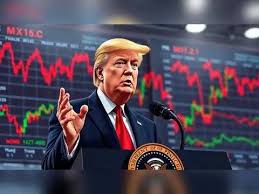
The U.S. construction industry is bracing for a challenging second half of 2025 as new tariffs and elevated interest rates threaten to strain project budgets nationwide.
The Construction MMI (Monthly Metals Index) held steady last month, showing no significant month-over-month price change. Yet, industry groups say this calm may be short-lived due to new tariffs on critical building materials like steel, aluminum, and copper.

President Trump’s recent announcement of a 50% tariff on all copper imports has amplified concerns about surging costs for contractors already managing tight budgets. Many firms are operating with slim profit margins — often under 5% — meaning any spike in material prices can be difficult to absorb.
“It is likely that contractors will be hit with substantial additional price increases shortly, unless the tariffs are postponed or rolled back,” warned Ken Simonson, chief economist at the Associated General Contractors of America (AGC).
Industry analysts estimate that the new round of duties could increase steel prices by about 8.2% and aluminum by roughly 5.7%, driving total project costs up by an estimated 5–7%. Recent Producer Price Index data supports these projections: aluminum mill shapes cost nearly 10% more this January compared to last year, while copper and brass mill forms rose over 12% year-over-year.

Material inflation is only part of the squeeze. Contractors must also navigate a tough borrowing landscape. The Federal Reserve’s aggressive rate hikes between 2022 and 2023 raised the benchmark rate to more than 5%, the highest in over two decades. Although the Fed trimmed rates slightly in late 2024 — bringing the key rate down to around 4.25–4.50% — developers say borrowing costs remain historically high.
For builders, this means that commercial construction loans and mortgages often carry 6–7% interest rates, roughly double what they were a few years ago. Combined with pricier materials, these higher borrowing costs make it harder for projects to pencil out.
However, some economists see signs of relief ahead. Cooling inflation this spring boosted optimism that the Fed could cut rates again by the end of 2025 — a move that would ease financing costs and potentially reinvigorate stalled projects.
“Due to a cooler-than-expected inflation reading in May, the chances of an interest rate cut by the Federal Reserve in 2025 have improved,” said Anirban Basu, chief economist for Associated Builders and Contractors.
Still, contractors say they need clarity and consistency to plan effectively. Many are calling on policymakers to reconsider the new tariffs to avoid adding further cost pressure to an industry already balancing high wages, labor shortages, and tight supply chains.
With large-scale projects on the line — from infrastructure upgrades to commercial real estate and energy facilities — industry groups argue that containing material costs and stabilizing financing conditions will be critical to keeping construction budgets viable through 2025 and beyond.
Originally reported by Yahoo Finance.